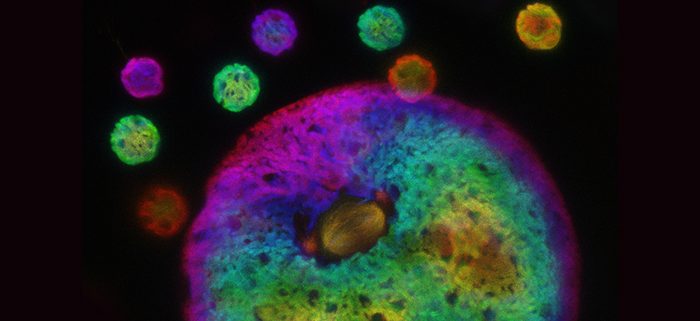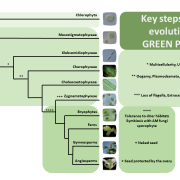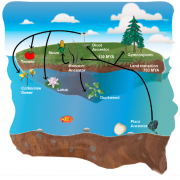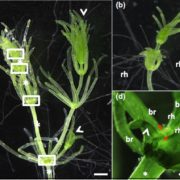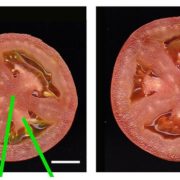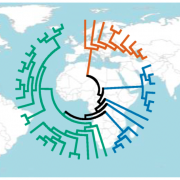Make two from one: How embryonic algal cells divide in an orchestrated flow of subcellular structures
Eva Laura von der Heyde and Armin Hallmann
Department of Cellular and Developmental Biology of Plants, University of Bielefeld, Universitätsstr. 25, 33615 Bielefeld, Germany
Background: Mitosis, a type of cell division, is fundamental to all eukaryotic life and must be carried out very accurately. Even though the process of mitosis itself is highly conserved among eukaryotes, there are significant differences between animals, fungi, plants and algae. From an evolutionary point of view, the green alga Volvox carteri used here possesses both key animal and plant functions and it exhibits important features of the last common eukaryotic ancestor that have been lost in other lineages. Prior to our work, a comprehensive in vivo analysis of the entire process of cell division in green algae was lacking.
Question: How exactly does cell division work in green algae? How do the cytosolic centrosomes deal with the persistent nuclear envelope in this process? What is the relationship between different microtubular structures?
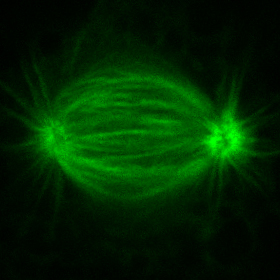
Microtubule asters and spindle apparatus at metaphase of mitosis visualized by fluorescently tagged tubulin.
Findings: Our study reveals enormous dynamics during mitosis, clarifies spatio-temporal relationships of subcellular structures and provides insights into evolution of cell division. Although the nuclear envelope does not break down during early mitosis of Volvox, it becomes permeable and the nucleus temporarily loses its identity. Two microtubule organizing centers, the centrosomes, located immediately outside the nuclear envelope participate in initiation of the mitotic spindle formation inside the nuclear envelope. This process also defines the orientation of the mitotic spindle. In cytokinesis, an algae-specific microtubule structure, the phycoplast, replaces the spindle. The microtubules of the phycoplast may play a direct role in promoting the cell membrane invagination of the cleavage furrow.
Next steps: How are the massive rearrangements of subcellular structures regulated? What happens at the nuclear pores when the nuclear envelope becomes permeable at the onset of mitosis? What determines in later embryogenesis which cells then divide asymmetrically rather than symmetrically?
Eva Laura von der Heyde and Armin Hallmann. (2022). Molecular and cellular dynamics of early embryonic cell divisions in Volvox carteri.


